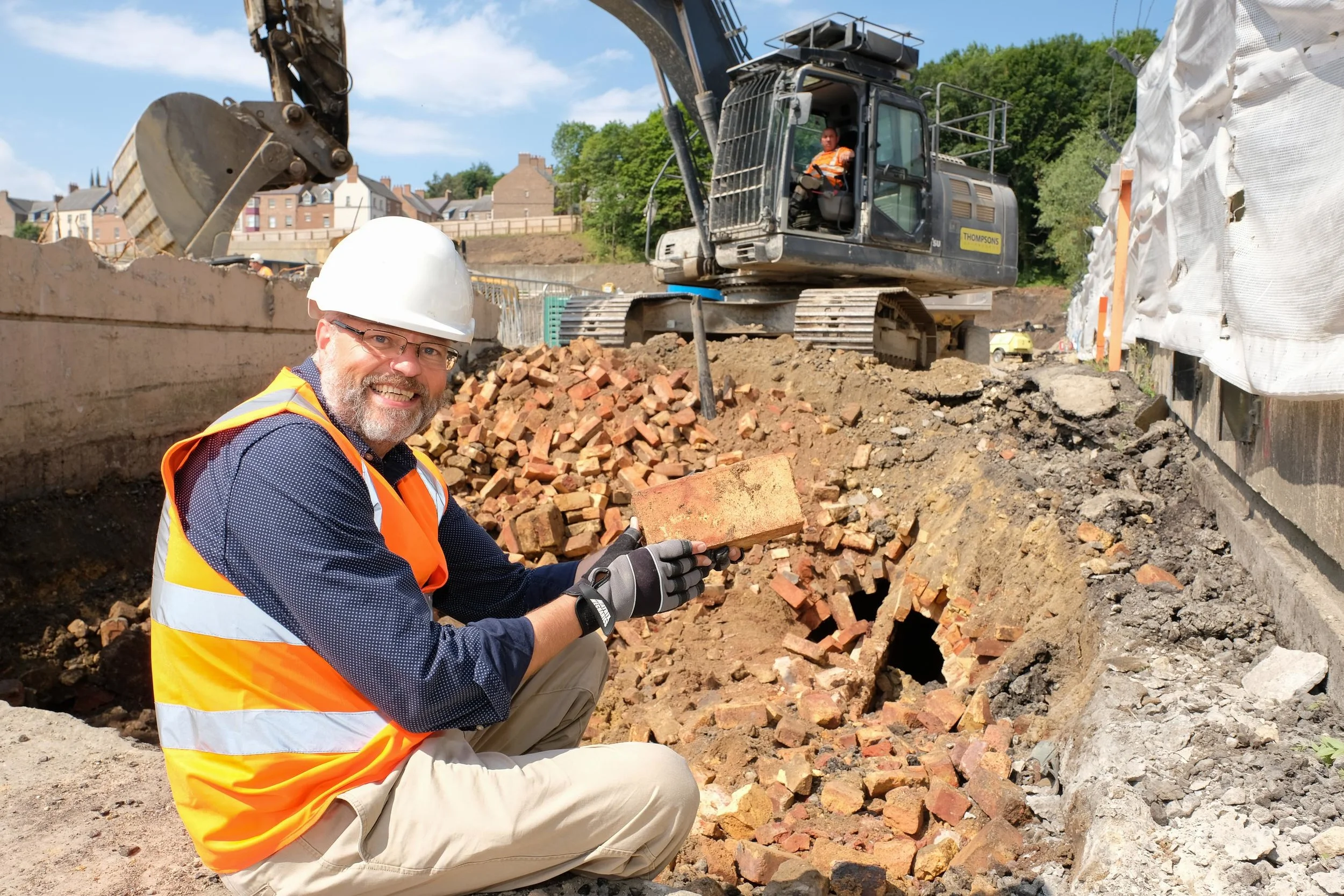Victorian gasworks structure rescued by Milburngate developers for UK heritage project
The developers of Milburngate have discovered the remains of Victorian Gas Works on the site on Durham’s Riverside, which will become part of a UK heritage project.
Buried several metres below the surface, the site team discovered a flue structure made of firebricks, which was part of the old retort house – where coal was baked in a type of oven called a retort, to release gas from the coal.
It was thought that the construction of the Passport Office building in the 1960s had destroyed anything of significance from the old gasworks, so the unexpected discovery enabled Milburngate’s developers to do something positive by recovering the bricks for the heritage project.
The bricks were part of the gasworks at Framwellgate owned by the City of Durham Gas Company, which was formed in 1856. Durham had earlier adopted gas lighting in 1823 and a year later the whole city was lighted by gas from a privately-owned works, which was later sold to Durham Gas Company and subsequently moved to the Riverside.
Most of the former gasworks structures were located to the north of the site and underneath the former Passport Office. The flue of the retort, which was discovered, was constructed below ground level, which ensured its survival over the past century.
The recovered Victorian bricks are now destined for a project in the East Midlands where a Building Preservation Trust is regenerating a historic gasworks in the estate village of Sudbury, Derbyshire.
The Sudbury Gasworks Restoration Trust (SGRT) is preserving, restoring and refurbishing a Grade 2 listed 1874 gasworks in Derbyshire and the bricks will be used to rebuild the building’s retort. Thanks to National Lottery players, SGRT has received initial support and development funding* from the Heritage Lottery Fund (HLF) for a project to create a new community resource in Sudbury parish.
It is also sympathetically extending the building on the footprint of its former gasholder storage facility to create a new main hall for events, which will hold up to 100 people.
Members of the Milburngate development team, including Thompsons of Prudhoe and engineering services specialist WSP, undertook a programme of works to ensure the bricks could be safely recovered from the site and transported to Derbyshire.
The remains of the retort were discovered during enabling and remediation works ahead of the start of construction later this year of the first phase of Milburngate which, upon completion, will provide a range of premium leisure facilities, bars and restaurants, high quality offices and luxury apartments.
Ian Beaumont, Project Director of Milburngate, said: “These bricks represent an important part of UK industrial heritage and we have the opportunity bring them back into use after being buried under the site for more than 100 years. The Sudbury Gasworks project is the ideal location for the firebricks as they will not only help with the restoration of the building, but help educate future generations about the engineering advances made by the Victorians.”
Prof. Russell Thomas, Technical Director - Ground Risk and Remediation, at WSP, said: “It’s fantastic to be able to support a project that recognises the important role coal played in England for many, many years. I was aware of the project at Sudbury and when the bricks were discovered under Milburngate I knew they could be of practical benefit to the Trust in Derbyshire. Both regions have strong coal mining heritage and it’s with excitement that I await the building’s restoration.”
Timothy Webber, SGRT chair, said: “We are extremely grateful to the team at Milburngate for the donation of these bricks, which will be incorporated into our restoration of the Sudbury Gasworks. The building, including the retort house, will give visitors a better understanding of how gas was produced from coal and the various functions of the rooms within the gas house, while creating a new community resource for our area.”


